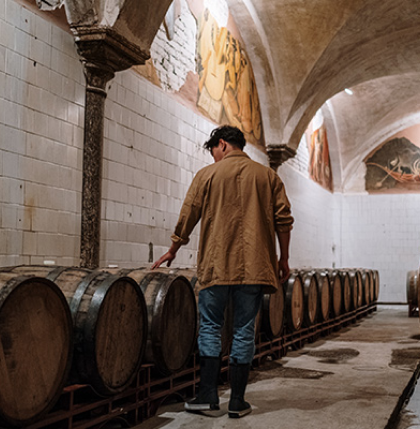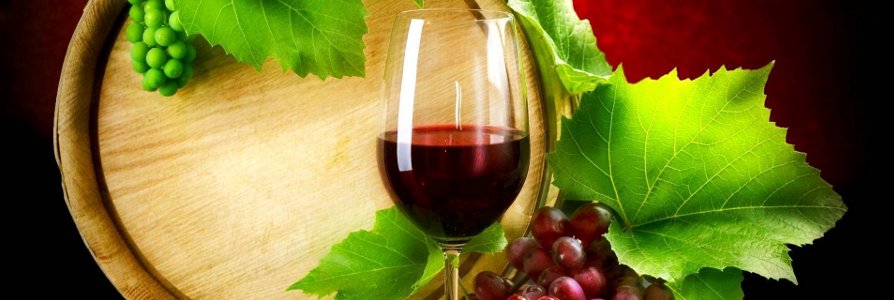WOODAB LLC
THE TASTE OF WINE
THE TASTE OF WINE
How to Read an Italian Wine Label
European labels can be difficult to read, especially those from Italy. A few key terms can help you understand the implications of the language on your bottle.
DOCG: An abbreviation for Denominazione di Origine Controllata e Garantita. It’s the top classification for Italian wines. Strict rules govern all aspects of production. They include where the grapes can be grown, what varieties are allowed and how wines can be aged. There are 74 DOCGs in Italy, with the latest addition in 2011.
DOC: An abbreviation for Denominazione di Origine Controllata. Is one step below DOCG. Rules govern production and style but aren’t as stringent as those for DOCGs. There are 334 DOCs in Italy, with the most recent additions approved in mid-2017.
IGT: An abbreviation for Indicazione Geografica Tipica. Introduced in 1992, this classification allows winemakers to use grapes and craft styles not allowed under DOC and DOCG regulations. There are currently 118 IGTs in Italy.
Riserva: Denotes a wine aged for significantly longer than usual, though rules vary among the denominations.
Superiore: Denotes a higher quality designation, tacked on generally to a regional name (i.e., Soave Superiore).
Classico: Denotes wines from a zone within a region (i.e., Chianti Classico) considered the original area of production.
Azienda Agricola: A farm or estate that produces its own grapes for the production of its wines.
Annata or Vendemmia: A specific harvest or vintage.
Produttore: Producer
Tenuta: Estate
Vigneto: Vineyard


The next step
The next step is to swirl the wine gently around the glass. So-called “legs” or “tears,” thin sinewy threads of wine that run down the side of the glass, may appear. Contrary to popular belief, they are not indicative of high glycerol content, but are simply the effect of alcohol on wine’s viscosity, or the way the wine flows. The greater the alcohol content, the less free-flowing, or more viscous, the wine actually becomes.
THERE ARE CERTAIN, CONSTANT FACTORS
that affect the taste and quality of wine. These include location; climate, which determines the ability to grow grapes; vintage, the vagaries of which can make or break a harvest; aspect, responsible for enhancing or negating local conditions; and soil. Also important are viticulture, because the cultivation techniques used can stretch or concentrate varietal character, vinification, which, like cooking methods, can produce a range of options from the same basic ingredient, the winemaker, and grape variety—always the most important factor.
Unlocking Wine Secrets: The Art of Observing Wine Color and Understanding its Characteristics
Natural light is best for observing a wine’s color, the first clue to its identity once its condition has been assessed. Look at the wine against a white background, holding the glass at the bottom of the stem and tilting it away from you slightly. Red wines vary in color from clairet, which is almost rosé, to tones so dark and opaque that they seem black. White wines range from a colorless water-white to deep gold, although the majority are a light straw-yellow color. For some reason, there are very few rosé wines that are truly pink in color, the tonal range extending from blue-pink, through purple-pink, to orange-pink. Disregard any impression about a wine’s color under artificial lighting because it will never be true—fluorescent light, for example, makes a red wine appear brown.
Factors affecting color The color and tonal variation of any wine, whether red, white, or rosé, is determined by the grape variety. It is also influenced by the ripeness of the actual grapes, the area of production, the method of vinification, and the age of the wine. Dry, light-bodied wines from cooler climates are the lightest in color, while fuller bodied or sweeter-styled wines from hotter regions are the deepest. Youthful red wines usually have a purple tone, whereas young white wines may hint of green, particularly if they are from a cooler climate. The aging process involves a slow oxidation that has a browning effect similar to the discoloration of a peeled apple that has been exposed to the air.
Almost everybody can detect and distinguish over 1,000 different smells, the majority of which are ordinary, everyday odors. Give the glass a good swirl, put your nose into the glass, and take a deep sniff. While it is essential to take a substantial sniff, it is not practicable to sniff the same wine again for at least two minutes. This is because each wine activates a unique pattern of nerve ends in the olfactory bulb; these nerve ends are like small candles that are snuffed out when activated and take a little time to reactivate. As a result, subsequent sniffs of the same smell can reveal less and less, yet it is perfectly feasible to smell different smells, therefore different wines, one after the other.

The Art of Wine Tasting:
Take a good mouthful and draw air into the mouth through the wine; this makes a gurgling sound, but it is essential to do it in order to magnify the wine’s volatile characteristics in the back of the throat. The tongue discerns only sweetness, sourness, bitterness, and saltiness. Every other “taste” we smell. By drawing air through a mouthful of wine, the volatilized aromas are taken into the back of the throat, where they are picked up by the olfactory bulb, which automatically analyzes them and transmits the information to the brain as various so-called flavors.

If you are tasting a red wine, its tannin content can be revealing. Tannin is derived from the grape’s skin, and the darker and thicker it is, and the longer the juice macerates with the skins, the more tannin there will be in the wine. A great red wine will contain so much tannin that it will literally pucker the mouth, while early-drinking wines will contain little. If you are tasting a sparkling wine, on the other hand, its mousse, or effervescence, will give extra clues. The strength of the mousse will determine the style—whether it is fully sparkling, semi-sparkling, or merely pétillant – and the size of the bubbles will indicate the quality; the smaller they are, the better.
